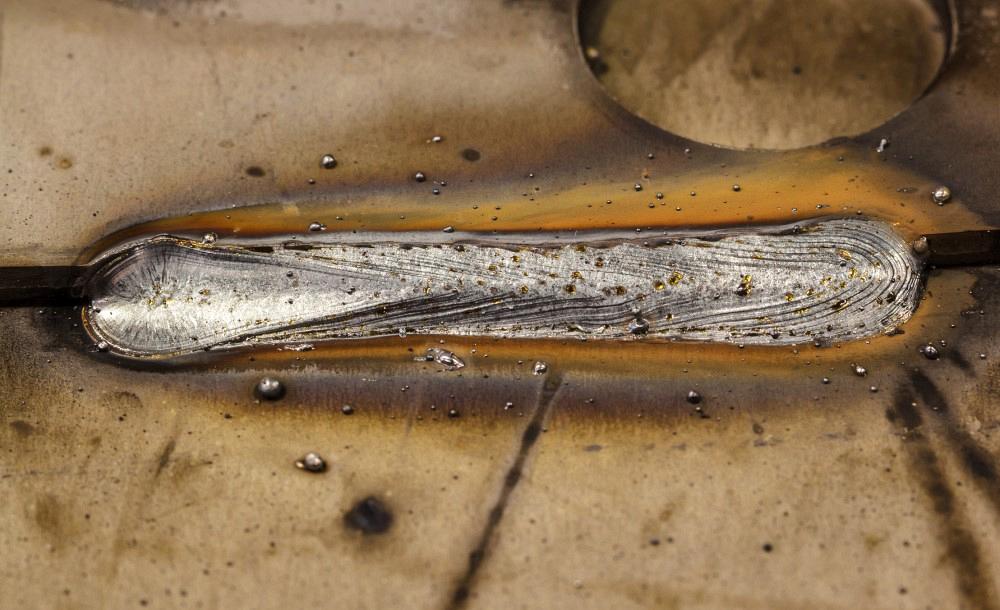Porosity in Welding: Identifying Common Issues and Implementing Ideal Practices for Avoidance
Porosity in welding is a pervasive concern that commonly goes unnoticed up until it causes significant issues with the stability of welds. In this conversation, we will certainly explore the key aspects adding to porosity formation, analyze its harmful results on weld performance, and review the ideal techniques that can be taken on to reduce porosity incident in welding processes.
Common Sources Of Porosity

An additional regular wrongdoer behind porosity is the presence of contaminants on the surface area of the base steel, such as oil, grease, or corrosion. When these contaminants are not properly eliminated before welding, they can vaporize and end up being trapped in the weld, triggering problems. In addition, using dirty or wet filler materials can introduce impurities right into the weld, adding to porosity concerns. To alleviate these common root causes of porosity, complete cleansing of base metals, correct securing gas selection, and adherence to optimum welding parameters are necessary techniques in accomplishing top notch, porosity-free welds.
Influence of Porosity on Weld Top Quality

The presence of porosity in welding can considerably compromise the structural stability and mechanical buildings of bonded joints. Porosity produces voids within the weld steel, weakening its total stamina and load-bearing capability. These voids serve as anxiety concentration points, making the weld much more prone to fracturing and failing under used lots. In addition, porosity can reduce the weld's resistance to rust and other environmental variables, additionally diminishing its long life and efficiency.
Among the main consequences of porosity is a reduction in the weld's ductility and sturdiness. Welds with high porosity levels often tend to display lower effect stamina and lowered capacity to flaw plastically prior to fracturing. This can be especially concerning in applications where the welded parts go through vibrant or cyclic loading problems. In addition, porosity can hamper the weld's ability to successfully transmit forces, resulting in early weld failure and possible safety risks in important frameworks.
Finest Practices for Porosity Prevention
To improve the architectural integrity and high quality of welded joints, what certain measures can be executed to reduce the event of porosity throughout the welding process? Porosity avoidance in welding is critical to make sure the stability and strength of try this web-site the last weld. One efficient method is correct cleansing of the base steel, getting rid of any kind of pollutants such as rust, oil, paint, or dampness that might lead to gas entrapment. Ensuring that the welding equipment remains in excellent problem, with tidy consumables and suitable gas circulation prices, can also significantly minimize porosity. Additionally, keeping a steady arc and regulating the welding specifications, such as voltage, current, and take a trip rate, assists develop a constant weld swimming pool that lessens the danger of gas entrapment. Using the right welding technique for the certain material being welded, such as adjusting the welding angle and weapon placement, can additionally avoid porosity. Routine evaluation of welds and immediate removal of any type of issues determined throughout the welding process are necessary techniques to avoid porosity and create premium welds.
Importance of Appropriate Welding Techniques
Carrying out correct welding methods is extremely important in guaranteeing the structural integrity and top quality of welded joints, building on the structure of efficient porosity avoidance measures. Welding methods straight influence the overall stamina and durability of the bonded structure. One key facet of appropriate welding techniques is keeping the right warm input. Too much warm can result in raised porosity due to the entrapment of gases in the weld pool. Alternatively, inadequate warmth might result in incomplete combination, developing prospective powerlessness in the joint. In addition, utilizing the proper welding criteria, such as voltage, existing, and take a trip rate, is crucial for achieving sound welds with minimal porosity.
Moreover, the option of welding procedure, whether it be MIG, TIG, or stick welding, should align with the certain needs of the job to guarantee optimal results. Proper cleansing and prep work of the base steel, as well as picking the ideal filler material, are likewise necessary parts of competent welding methods. By sticking to these ideal techniques, welders can decrease the threat of porosity formation and generate premium, structurally sound welds.

Testing and Quality Assurance Procedures
Examining treatments are essential to spot and prevent porosity in welding, ensuring the strength and resilience of the last product. Non-destructive testing techniques such as ultrasonic testing, radiographic her explanation testing, and visual inspection are commonly employed to identify potential defects like porosity.
Post-weld evaluations, on the various other hand, check that examine the final weld for any type of problems, including porosity, and verify that it fulfills defined requirements. Carrying out a detailed quality control strategy that consists of complete screening treatments and inspections is critical to reducing porosity problems and making sure the general high quality of welded joints.
Verdict
In verdict, porosity in welding can be a typical problem that affects the quality of welds. By recognizing the typical reasons for porosity and executing finest methods for avoidance, such as appropriate welding techniques and testing measures, welders can make certain premium quality and trustworthy welds. It is important to focus on avoidance methods to lessen the event of porosity and keep the honesty of bonded frameworks.